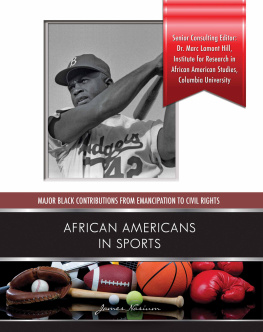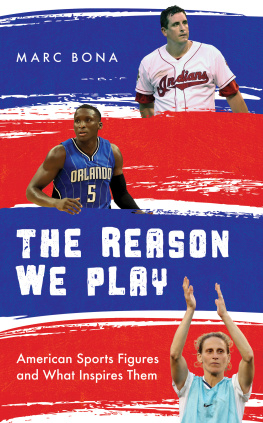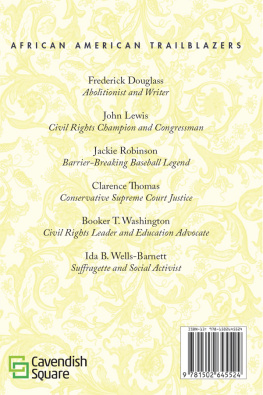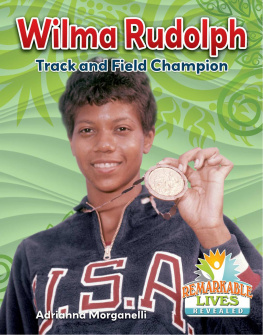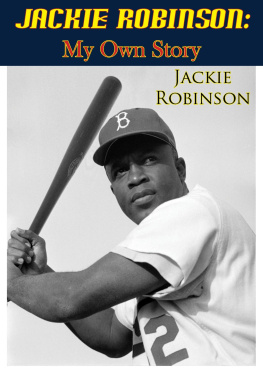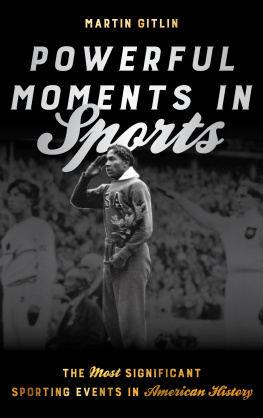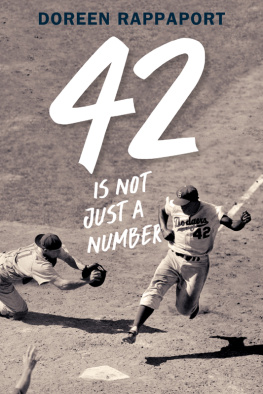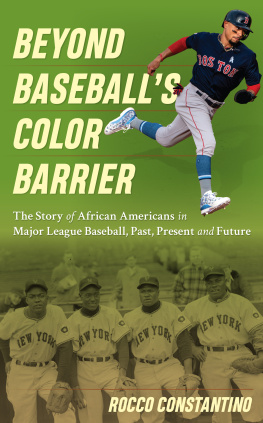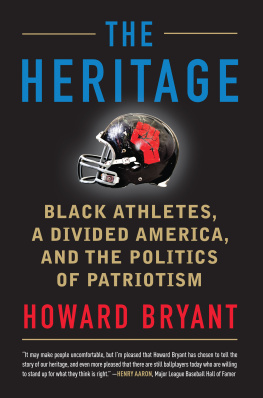
AFRICAN-AMERICANS
IN SPORTS
JAMES NASIUM
TITLES IN THIS SERIES
AFRICAN-AMERICAN ACTIVISTS
AFRICAN-AMERICAN ARTISTS
AFRICAN-AMERICAN EDUCATORS
AFRICAN-AMERICAN MUSICIANS
AFRICAN-AMERICAN SCIENTISTS AND INVENTORS
AFRICAN-AMERICAN WRITERS AND JOURNALISTS
AFRICAN AMERICANS IN BUSINESS
AFRICAN AMERICANS IN LAW AND POLITICS
AFRICAN AMERICANS IN THE MILITARY
AFRICAN AMERICANS IN RADIO, FILM, AND TV ENTERTAINMENT
AFRICAN AMERICANS IN SPORTS
A HISTORY OF THE CIVIL RIGHTS MOVEMENT
AFRICAN-AMERICANS
IN SPORTS

JAMES NASIUM

MASON CREST
PHILADELPHIA
 | Mason Crest
370 Reed Road, Suite 302
Broomall, PA 19008
www.MasonCrest.com |
Copyright 2013 by Mason Crest, an imprint of National Highlights, Inc.
All rights reserved. No part of this publication may be reproduced or transmitted in any form or by any means, electronic or mechanical, including photocopying, recording, taping, or any information storage and retrieval system, without permission from the publisher.
Printed and bound in the United States of America.
CPSIA Compliance Information: Batch #MBC2012-11. For further information, contact Mason Crest at 1-866-MCP-Book.
First printing
1 3 5 7 9 8 6 4 2
Library of Congress Cataloging-in-Publication Data
James Nasium, 1961
African Americans in sports / James Nasium.
p. cm. (Major Black contributions from emancipation to civil rights)
Includes bibliographical references and index.
ISBN 978-1-4222-2381-9 (hc)
ISBN 978-1-4222-2394-9 (pb)
1. African American athletesHistoryJuvenile literature. 2. SportsUnited StatesHistoryJuvenile literature. I. Title.
GV583.M335 2012
796.0896'073dc23
2011051950
Publishers note: All quotations in this book are taken from original sources, and contain the spelling and grammatical inconsistencies of the original texts.
Picture credits: Associated Press: .
TABLE OF CONTENTS
by Dr. Marc Lamont Hill,
Institute for Research in African American Studies at Columbia University.

Dr. Marc Lamont Hill
I t is impossible to tell the story of America without telling the story of Black Americans. From the struggle to end slavery, all the way to the election of the first Black president, the Black experience has been a window into Americas own movement toward becoming a more perfect union. Through the tragedies and triumphs of Blacks in America, we gain a more full understanding of our collective history and a richer appreciation of our collective journey. This book series, MAJOR BLACK CONTRIBUTIONS FROM EMANCIPATION TO CIVIL RIGHTS, spotlights that journey by showing the many ways that Black Americans have been a central part of our nations development.
In this series, we are reminded that Blacks were not merely objects of history, swept up in the winds of social and political inevitability. Rather, since the end of legal slavery, Black men and women have actively fought for their own rights and freedoms. It is through their courageous efforts (along with the efforts of allies of all races) that Blacks are able to enjoy ever increasing levels of inclusion in American democracy. Through this series, we learn the names and stories of some of the most important contributors to our democracy.
But this series goes far beyond the story of slavery to freedom. The books in this series also demonstrate the various contributions of Black Americans to the nations social, cultural, technological, and intellectual growth. While these books provide new and deeper insights into the lives and stories of familiar figures like Martin Luther King, Michael Jordan, and Oprah Winfrey, they also introduce readers to the contributions of countless heroes who have often been pushed to the margins of history. In reading this series, we are able to see that Blacks have been key contributors across every field of human endeavor.
Although this is a series about Black Americans, it is important and necessary reading for everyone. While readers of color will find enormous purpose and pride in uncovering the history of their ancestors, these books should also create similar sentiments among readers of all races and ethnicities. By understanding the rich and deep history of Blacks, a group often ignored or marginalized in history, we are reminded that everyone has a story. Everyone has a contribution. Everyone matters.
The insights of these books are necessary for creating deeper, richer, and more inclusive classrooms. More importantly, they remind us of the power and possibility of individuals of all races, places, and traditions. Such insights not only allow us to understand the past, but to create a more beautiful future.


In 1947, Jackie Robinson became the first African American to play in baseballs major leagues during the 20th century. His accomplishment opened the way for greater participation and acceptance of black athletes in other sports.
O n Tuesday, April 15, 1947, more than 26,000 fans filled Ebbets Field in Brooklyn, New York. They were there to watch the Brooklyn Dodgers open their season against the Boston Braves. Brooklyn had a new player in its lineup wearing number 42. As he jogged across the grass that afternoon to take his position at first base, Jackie Robinson made history. The 28-year-old became the first African American to play major league baseball in the 20th century.
Robinsons presence on the baseball field ended a 59-year-old ban on African-American players in professional baseballs highest league. His success opened the way for other blacks in baseball, as well as other sports. Robinson also inspired black Americans off the field. He gave them hope that someday they might have the same rights as whites.
In the 1940s, many white Americans didnt want blacks and whites to mix. They wanted to keep African Americans separate, or segregated. In some states, particularly in the South, blacks could not eat in the same restaurants as whites. They couldnt drink from the same water fountains. Black children were not allowed to attend the same public schools as white children. Blacks could not even use the same hospitals as whites.
We believe that [Robinsons breaking the color barrier] was the beginning of the modern-day Civil Rights movement in our country, explained Bob Kendrick, a historian and president of the Negro Leagues Baseball Museum. When you put it all together, you have a story that is actually bigger than the game of baseball itself.
Did You Know?
The Dodgers didnt have a locker for Jackie Robinson on his first day in the major leagues. His uniform was hanging on a hook nailed to a blank wall. Robinson sat in a folding chair and changed from his suit into a white Dodgers uniform before the game started.
Next page
